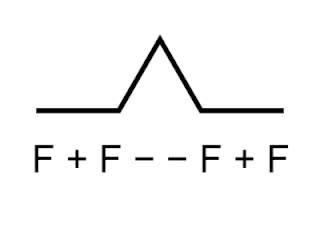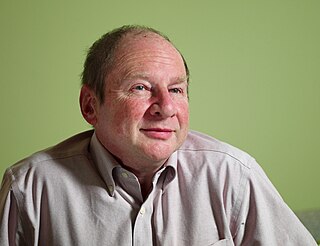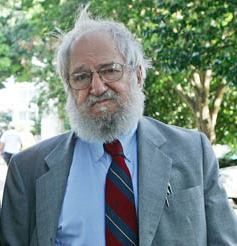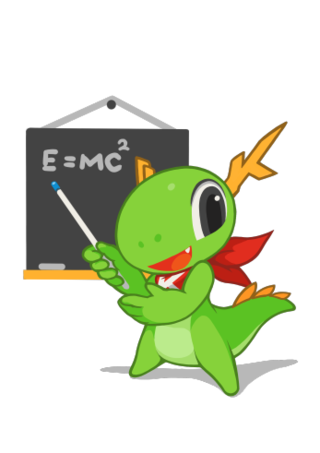Related Research Articles

Logo is an educational programming language, designed in 1967 by Wally Feurzeig, Seymour Papert, and Cynthia Solomon. Logo is not an acronym: the name was coined by Feurzeig while he was at Bolt, Beranek and Newman, and derives from the Greek logos, meaning 'word' or 'thought'.
Programmed Inquiry, Learning, or Teaching (PILOT) is a simple high-level programming language developed in the 1960s. Like its younger sibling LOGO, it was an early foray into the technology of computer-assisted instruction.
In computer graphics, turtle graphics are vector graphics using a relative cursor upon a Cartesian plane. Turtle graphics is a key feature of the Logo programming language.

The Blaster Learning System is an educational video game series created by Davidson & Associates and later published by JumpStart after the two companies were acquired and merged by CUC Software. The games primarily focused on mathematics, later expanding into language arts and science, and spawned an animated children’s television series in 1999 called Blaster's Universe.

Harold Abelson is an American mathematician and computer scientist. He is a professor of computer science and engineering in the Department of Electrical Engineering and Computer Science at the Massachusetts Institute of Technology (MIT), a founding director of both Creative Commons and the Free Software Foundation, creator of the MIT App Inventor platform, and co-author of the widely-used textbook Structure and Interpretation of Computer Programs, sometimes also referred to as "the wizard book."

In computing, a visual programming language, also known as diagrammatic programming, graphical programming or block coding, is a programming language that lets users create programs by manipulating program elements graphically rather than by specifying them textually. A VPL allows programming with visual expressions, spatial arrangements of text and graphic symbols, used either as elements of syntax or secondary notation. For example, many VPLs are based on the idea of "boxes and arrows", where boxes or other screen objects are treated as entities, connected by arrows, lines or arcs which represent relations. VPLs are generally the basis of Low-code development platforms.

Constructionist learning is the creation by learners of mental models to understand the world around them. Constructionism advocates student-centered, discovery learning where students use what they already know to acquire more knowledge. Students learn through participation in project-based learning where they make connections between different ideas and areas of knowledge facilitated by the teacher through coaching rather than using lectures or step-by-step guidance. Further, constructionism holds that learning can happen most effectively when people are active in making tangible objects in the real world. In this sense, constructionism is connected with experiential learning and builds on Jean Piaget's epistemological theory of constructivism.

Spinnaker Software Corporation was a software company founded in 1982 known primarily for its line of non-curriculum based educational software, which was a major seller during the 1980s. It was founded by chairman Bill Bowman and president C. David Seuss.
Edu-Ware Services, Inc. was an educational and entertainment software publisher established in 1979 by Sherwin Steffin and Steven Pederson. It was known for adventure games, role-playing video games, and flight simulators for the Apple II.

Atari Logo is ROM cartridge-based version of the Logo programming language for the Atari 8-bit computers published by Atari, Inc. in 1983. It was developed by Logo Computer Systems, Inc. (LCSI) in Quebec, Canada. LCSI wrote Apple Logo, and the Atari version maintains strong compatibility with it.
MicroWorlds is a family of computer programs developed by Logo Computer Systems Inc. (LCSI) that uses the Logo programming language and a turtle-shaped object to teach language, mathematics, programming, and robotics concepts in primary and secondary education. The program was part of a larger set of dialects and implementations created by Seymour Papert aimed at triggering the development of abstract ideas by children through experimentation.

Many games, utilities, and educational programs were available for Atari 8-bit computers. Atari, Inc. was primarily the publisher following the launch of the Atari 400/800 in 1979, then increasingly by third parties. Atari also distributed "user written" software through the Atari Program Exchange from 1981 to 1984. After APX folded, many titles were picked up by Antic Software.

The KDE Education Project develops free educational software based on the KDE technologies for students and parents. These educational software is translated into more than 65 languages, so that users can access them without any problems. The KDE-Edu project also provides free software educational to support and facilitate teachers in planning lessons.

FMSLogo is a free implementation of a computing environment called Logo, which is an educational interpreter language. GUI and Extensions were developed by George Mills at MIT. Its core is the same as UCBLogo by Brian Harvey. It is free software, with source available, written with Borland C++ and WxWidgets.

MSWLogo is a programming language which is interpreted, based on the computer language Logo, with a graphical user interface (GUI) front end. George Mills developed it at the Massachusetts Institute of Technology (MIT). Its core is the same as UCBLogo by Brian Harvey. It is free and open-source software, with source code available, in Borland C++.

The BBC Microcomputer System, or BBC Micro, is a series of microcomputers designed and built by Acorn Computers Limited in the 1980s for the Computer Literacy Project of the BBC. The machine was the focus of a number of educational BBC TV programmes on computer literacy, starting with The Computer Programme in 1982, followed by Making the Most of the Micro, Computers in Control in 1983, and finally Micro Live in 1985.

Cynthia Solomon is an American computer scientist known for her work in popularizing computer science for students. She is a pioneer in the fields of computer science, and educational computing. While working as a researcher at Massachusetts Institute of Technology (MIT), Solomon took it upon herself to understand and program in the programming language Lisp. As she began learning this language, she realized the need for a programming language that was more accessible and understandable for children. Throughout her research studies in education, Solomon worked full-time as a computer teacher in elementary and secondary schools. Her work has mainly focused on research on human-computer interaction and children as designers. While working at Bolt, Beranek and Newman, she worked with Wally Feurzeig and Seymour Papert, to create the first programming language for children, named Logo. The language was created to teach concepts of programming related to Lisp. Solomon has attained many accomplishments in her life such as being the vice president of R&D for Logo Computer Systems, Inc., when Apple Logo was developed and was the Director of the Atari Cambridge Research Laboratory. Solomon worked on the program committee of Constructing Modern Knowledge and the Marvin Minsky Institute for Artificial Intelligence in 2016. Further, she has published many writings based on research in the field of child education and technology in the classroom. Solomon has conducted workshops in elementary schools, high schools, and colleges regarding academic research and writing. She continues to contribute to the field by speaking at conferences and working with the One Laptop per Child Foundation.

Kids on Keys is a 1983 educational video game from Spinnaker Software designed by Freeda Lekkerkerker.

Turtlestitch is a free and open source platform for generating and sharing patterns for embroidery machines. Turtlestitch is derived from educational programming languages such as Logo, Scratch and Snap! using the same jigsaw style programming paradigm which offers simplicity suitable for novices but has powerful features, described as ‘low threshold, high ceiling’ by Seymour Papert. Its microworld is a turtle representing the needle of a programmable embroidery machine. Turtlestitch can be used for creating novel patterns for embroidery, combining the abstract logic of computing and the physical materiality of textiles. Its primary use is educational, as it offers a way of introducing programming to audiences with diverse interests. A growing gallery of open source embroidery designs enables community-based collaboration and shared learning. In 2017, Turtlestitch received the award for the best Open Educational Resource in the German-speaking countries.
References
- ↑ Staff writer (1983). "Drawing Program for Children". Compute! (34): 251. Retrieved 4 October 2011.
- ↑ D'lgnazio, Fred (1983). "Turning Logo Upside Down". Compute! (37): 152. Retrieved 4 October 2011.
- ↑ King, Charles (1983). "Software Review: Welcome to the World of Delta Drawing". Hands On!. 6 (2): 15–16.
- ↑ THE Journal. 18 (1). Information Synergy, Inc.: 48 1990.
{{cite journal}}: Missing or empty|title=(help)